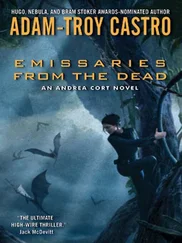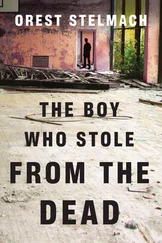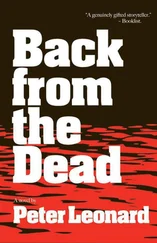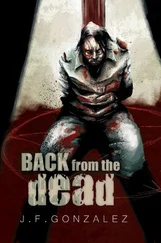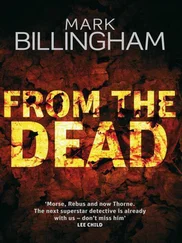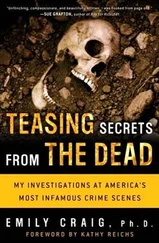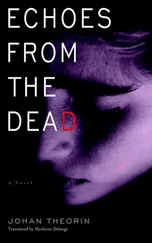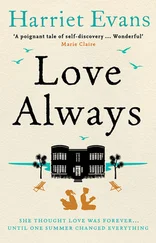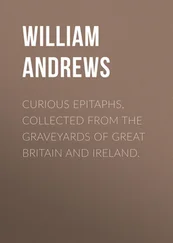When I took another look at the dates and thought about the organized crime connection, a wild thought came to mind. Was it possible that this rich man, executed decades ago and encased in lime, was actually Jimmy Hoffa? After all, the money clip read either HS or SH, what if the H stood for Hoffa? I knew it was a wild hunch, but my fingers trembled as I called my colleagues at the FBI.
They soon put an end to that theory. Hoffa's missing person's report, they told me, identified him as 5'5'' and 180 pounds. He was clearly way too short and thin to be our guy.
Meanwhile, I was reaching out to experts across the country. I sent the pen and pencil to the A. T. Cross Company in Lincoln, Rhode Island, hoping they could tell me when the items were manufactured. I sent the coin-it was a nickel-to the U.S. Mint, hoping that they could tell me whether the little date on the bottom really was 1964. (The coin was so corroded, I couldn't be sure.) The eyeglasses went to a local optical company to see if they could find any clues hidden in the frame style or the prescription. I took the skull to Dr. Mark Bernstein, our consultant in forensic odontology. And I sent the clothes and the money clips to the Fort Thomas Police Department for safekeeping.
One week after our trip to the river, all that remained in my lab were the bones and the keys. I'd gotten all I could from the bones. It was time to look at the keys.

The keys were a solid mass, fused together by years of corrosion. At first I thought I could simply pry them apart, and I did manage to break away two of the outer keys. The third time was definitely not the charm, however: The key split right down the middle. I'd have to find a better approach.
I laid out a piece of white butcher paper on my lab counter, then pulled out some petri dishes and a jar of naval jelly. Naval jelly is an acid that was originally used to remove rust and corrosion from metal objects such as ships, hence its name. I thought that at the very least I could use it to separate the keys. What I really hoped for was to read a manufacturer's name and city, but first things first.
I soaked the keys in the naval jelly for about an hour, then rinsed them in clear water to remove the acid. I was walking a fine line: I wanted the acid to eat away the corrosion while leaving intact any writing or logos on the keys. By alternately soaking and rinsing over a period of about two days, I was able to separate the rest of the keys without breaking any more of them.
The individual keys were still corroded, however, and no writing was visible to the naked eye. Full of optimism, I examined each one through my dissecting microscope. Yes, indeed I could just barely make out a cluster of tiny letters, stamped around the edge of two of the keys.
The letters were scarcely legible, but I thought that making them more three-dimensional might make them easier to read. So I turned off the room lights and worked under the single light of a freestanding halogen lamp, which had been positioned to hit each key at an angle. When I looked at a key under a large wall-mounted magnifying glass, I could see the contours of each letter on it a little more clearly. And when I delicately scraped each key's stamped surface with the blade of a scalpel, I managed to remove the decades-long corrosion a fraction of a millimeter at a time. Finally, I could read the secrets of the keys.
What I found sent me hurrying to the phone. After several long-distance calls, I dialed one final number.
Detective Daly picked up the phone. “I hope you're sitting down,” I told him. “Because you're not going to believe this. Our John Doe is from Connecticut.”
I could feel his surprise even over the phone. “What makes you say that, Doc?” he said finally.
“The keys were made by Connecticut locksmiths. One is imprinted with the words DEPIERNE, NORWALK, CONN. and one reads KARPELOW SAFE AND LOCK. I can even read a partial address on that one.” I couldn't read it all, but I had managed to make out a few key letters and numbers: _82 ELM STREET, ____________________PORT, CT. When I called the U.S. Post Office, they told me that those two-letter state designations were implemented in 1963. So the Karpelow key might have been made any time after 1963, and the DePierne key was imprinted no later than 1963, maybe earlier.
Daly's reaction was all I could have hoped for. “Doc, this is huge ,” he said hoarsely. “Let me make some calls, and I'll get back with you as soon as I know something.”
Early the next morning, he called back. “Okay, we've narrowed down the time just a bit more. Seems DePierne went out of business about twenty-five years ago, and Karpelow moved from that Elm Street address back in the 1970s.”
From that point on, the investigation took on a life of its own as the answers to the previous week's questions started pouring in. The Cross company told me that the particular model of pen and pencil I'd sent them had been made only between 1965 and 1970. The nickel did indeed bear the date of 1964. The eyeglasses had most likely been made during that same era in either Japan or Germany, which might help to explain my European imagery. And although he described the dental work much more clinically in his report, Dr. Bernstein told me that in his opinion, the teeth in our guy's mouth looked like expensive Park Avenue dentistry at its finest.
Then, on May 25, Daly called me at home a little after dinner. As soon as I heard his voice I knew he had exciting news, otherwise he'd have waited till the next day. “Do you feel lucky?” he asked me. He started to chuckle, then laughed out loud. “I had a reporter, Mike Mayko, run a piece about our John Doe in the Connecticut Post, and I just now spoke with him. He has a tip for us that came in through their crime stoppers hotline.”
A wealthy businessman had apparently disappeared from Weston, Connecticut, on March 25, 1966, right after he'd made an appearance before a New York City grand jury. This man had been one of three people accused of conspiring to evade $7 million in taxes owed on foreign stock trades. He'd reportedly left his home around 4:00 p.m. in a 1965 green Corvette Stingray and boarded an American Airlines flight from Kennedy Airport to Cincinnati under the assumed name of Mr. Henry. Then he simply vanished.
“Now here's the best part,” Daly told me. “The man's name is Henry Scharf.”
“Oh, my God. The initials on the money clip. So they were H.S. That's got to be him. Was he as big as I estimated?”
“You were right on target about everything. Mayko told me the guy was really tall and built like a pro football player. Obviously, he had money. He was 46 when he disappeared. And remember those German eyeglass frames? This guy traveled regularly to France and Germany.”
Now it was my turn to be stunned.
“So,” Daly went on, “I've got a Connecticut detective working on the next step. The tipster who saw the article in the paper, though, said contacting the family might not be too easy. He knows them, and they were so devastated by the incident that they may not want to have anything to do with the police.”
“But that was almost thirty years ago,” I said without thinking. “They have to be ready to talk about it now.” I couldn't stand the idea of being so close and then losing all hope of identification, especially for such a sad reason: decades of unhealed bitterness.
“First things first,” Daly told me. “Let me talk to them.”
As it turned out, the Scharf family was reluctant to talk to the police, but they were willing to talk to me. Perhaps a scientist or a doctor seemed less threatening to them than someone in law enforcement. When I spoke with Henry's son-in-law, who was acting as the spokesman for his wife and mother-in-law, I could tell that the wounds were still fresh, a quarter-century later, but the family was being as cooperative as they could be.
Читать дальше


